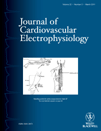Temporal Associations Between Thoracic Volume Overload and Malignant Ventricular Arrhythmias: A Study of Intrathoracic Impedance
J. Ip reports a travel grant from Boston Scientific; K. Stein reports honoraria and consulting income from Medtronic, Boston Scientific, and St. Jude Medical, and he is currently an employee of Boston Scientific Corporation; S. Iwai reports honoraria from Medtronic and Boston Scientific; B. Lerman reports honoraria from Boston Scientific and Medtronic. S. Markowitz reports honoraria from Medtronic and Boston Scientific, research support for unrelated project from Medtronic, and fellowship funding from Medtronic, Boston Scientific, and St. Jude Medical. Other authors: No disclosures.
Abstract
Volume Overload and Ventricular Arrhythmias. Background: Acute exacerbations of heart failure (HF) are believed to trigger malignant ventricular arrhythmias, but the temporal association between fluid accumulation and ventricular arrhythmias has not been evaluated in an objective manner. We hypothesized that increased intrathoracic fluid accumulation in patients with HF, as measured by an index of intrathoracic impedance, is associated with an increased risk of ventricular arrhythmias.
Methods and Results: We analyzed interrogations in a cohort of 96 patients with left ventricular dysfunction (EF ≤ 35%) with devices that monitor intrathoracic impedance (OptiVol fluid index). Treated episodes of ventricular tachycardia or fibrillation (VT/VF) were adjudicated and stratified according to predetermined fluid index thresholds (OptiVol indices of 15, 30, 45, 60 Ω-days). VT/VF episodes occurred in 16 patients (17%). VT/VF was more common on days when the fluid index was elevated using threshold values of 15, 30, and 45 Ω-days (P = 0.006, 0.04, 0.02, respectively). There were no differences in the percent of time above any threshold between patients with and without VT/VF.
Conclusions: In patients with HF who develop VT/VF, volume overload, as detected by an index incorporating changes in intrathoracic impedance, was temporally associated with malignant ventricular tachyarrhythmias. (J Cardiovasc Electrophysiol, Vol. 22, pp. 293-299, March 2011)




